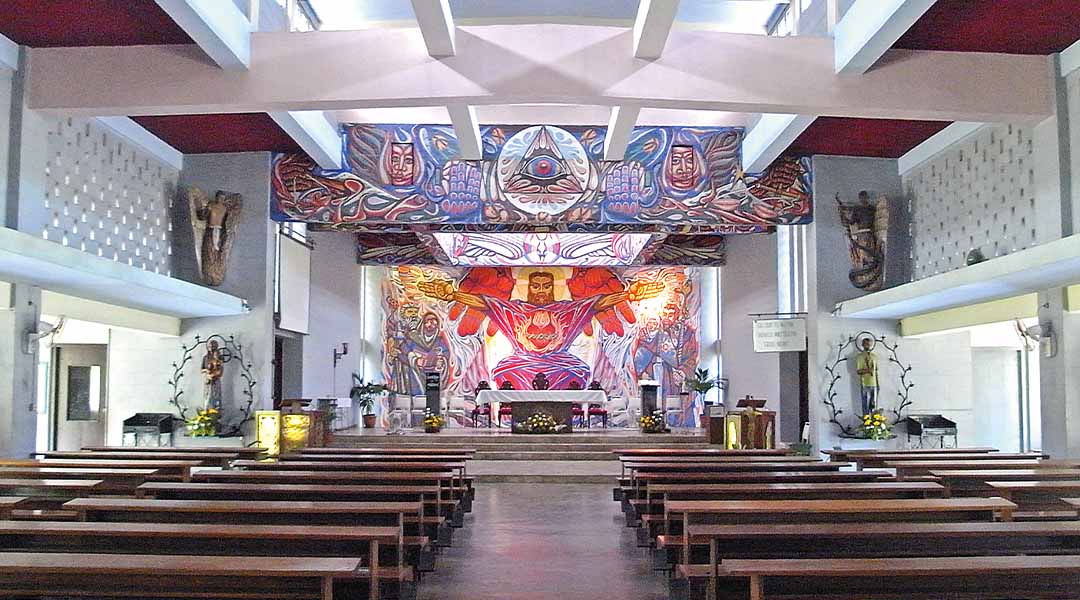
Behind the Anger: The mid-century modern Church of the Angry Christ
The Chapel of St. Joseph the Worker, better known as the Church of the Angry Christ, sits at the heart of Victorias Milling Company’s 7000-hectare site in Negros Occidental, an hour and a half by car from Bacolod.
It was built as the province was recovering from the war in the first few years after liberation. With the sugar industry expanding to cope with post-war demand, Victorias went full blast to answer the demand. Its owners, among them the Ossorios, wanted to make sure the expanded complex would provide for the needs of its workers, including proper housing and a place of worship. Anthony Raymond, a Czech-American architect based in Japan, was given the job to design the structure.
Born Antonin Reimann, Raymond was a Czech who moved to the United States after receiving technical training as an architect in Europe. Before World War I, he and his wife Noemi joined the atelier of Frank Lloyd Wright, where they both got their first glimpse of Japanese culture, as Wright was a collector of Japanese art and his work was influenced by Japanese architecture, although he never admitted it.
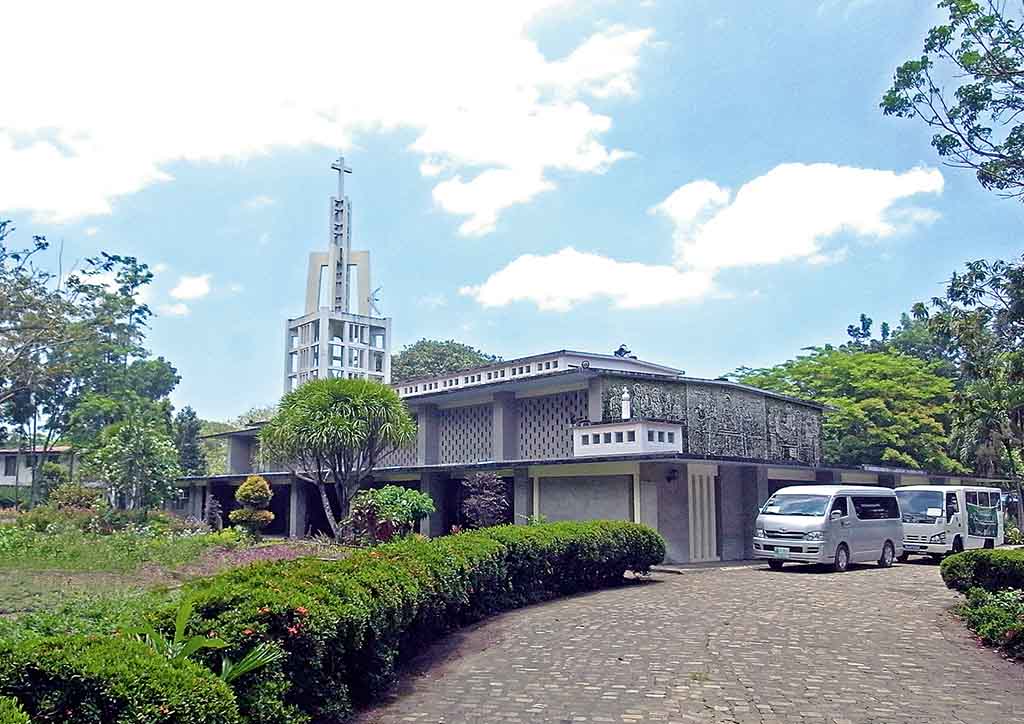
Raymond eventually left Wright to practice in Japan, establishing himself with a wide range of residential and commercial projects and introducing new geometries and a proto-modernist style influenced by Le Corbusier. In the late ‘30s, he set up an atelier called the New Hope farm (à la Wright’s Taliesin) near New York with his wife, where they worked until the war years. After World War I, Raymond went back to Japan to reestablish his practice in Tokyo, where his office stands to this day. Modern architectural historians now acknowledge Raymond as the Father of Japanese Modernism, influencing the likes of Tadao Ando and Kenzo Tange.
READ MORE: The Mod-art and Mid-century Leanings of Basilan cathedral
The connection between Anthony Raymond and Victorias after the war was probably through Alfonso Ossorio, a scion of the Ossorio family. Ossorio’s education in Harvard and the Rhode Island School of Design, where he established himself as a Modernist painter, put him in the same artistic sphere of Anthony and Noemi Raymond. Also in this circle would have been Ade Benthume, another artist, who would be brought in to work on the Victorias mill town improvements.
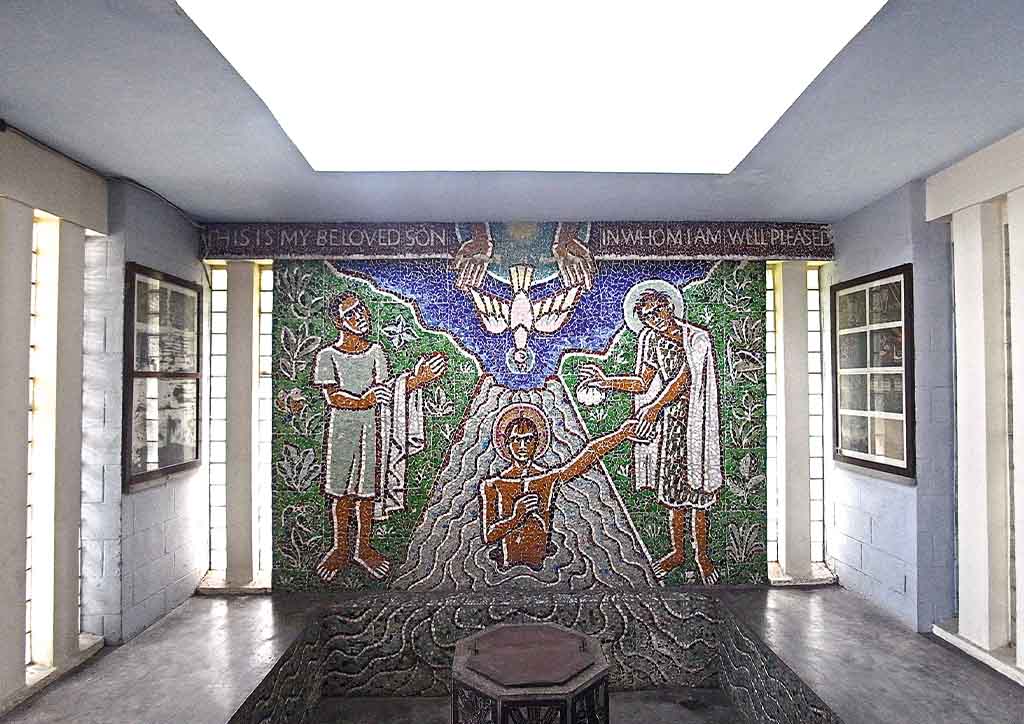
Raymond, Ossorio and Benthume came to the Philippines in 1948-49 to work on the chapel, the centerpiece of the town expansion. Raymond worked on the structure, which was to be the venue for the artworks of the other two, together with two more artists, Arcadio Amore and Benjamin Valenciano.
The floor plan of the chapel is a simple rectangle. The elevations and massing are low and horizontal, reminiscent of Wright’s earlier prairie houses. The front elevation is a simple concrete fascia that hides the pitched roof and simplifies the structure’s silhouette. The foyer has a low ceiling with a continuous space save for the baptistery on one end. A mosaic done by Benthume (who was a proponent of Catholic social art) dominates the baptistery, showing the baptism of Jesus in the Jordan River.
YOU MIGHT LIKE: 99 light openings illuminate concrete mosque by Andra Matin
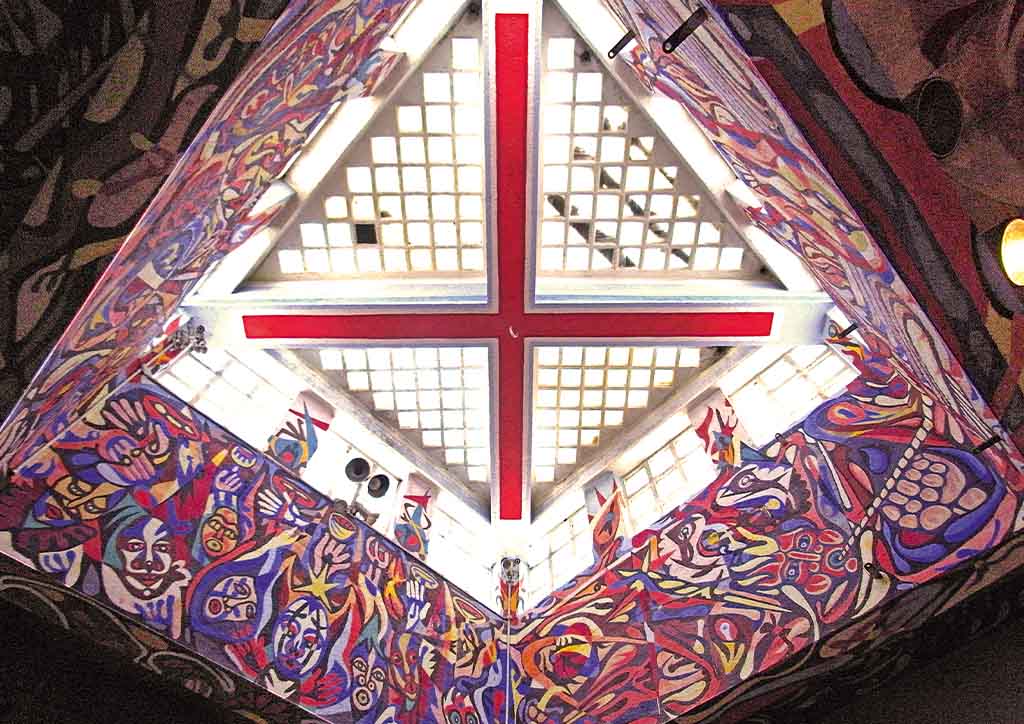
From the low-ceilinged foyer, one emerges into the larger main space for the congregation—another influence of Wright. This space is lit by a continuous clerestory, a pierced screen that provides natural ventilation. The Japanese influence on Raymond is seen in the flow of spaces and the use of offset, sliding or folding doors and partitions. Lessons he learned in earthquake design were also incorporated, through the provision of sliding beams in the connection between the main mass of the chapel and the end housing the main altar and tower.
READ MORE: Revisit the stories behind 7 heritage Batangas churches this Holy Week
The main mural’s fierce-looking subject inspired Life magazine to call it “The Church of the Angry Christ” after the church was completed. Ossorio meant for this huge mural, which fills the whole wall behind the altar, to depict God’s continuing presence from above as well as through Christ. The skylight below the central tower was used as a canvas for the dove representing the Holy Spirit. God the Father is depicted as giant red hands holding aloft the outstretched figure of Jesus Christ. The polychromy used in the mural is like the vibrant palette used by the Mexican muralist Diego Rivera, but is distinctively Ossorio’s in a style and phase of his work that would eventually shift to abstract Artaud then assemblage in the next few years.
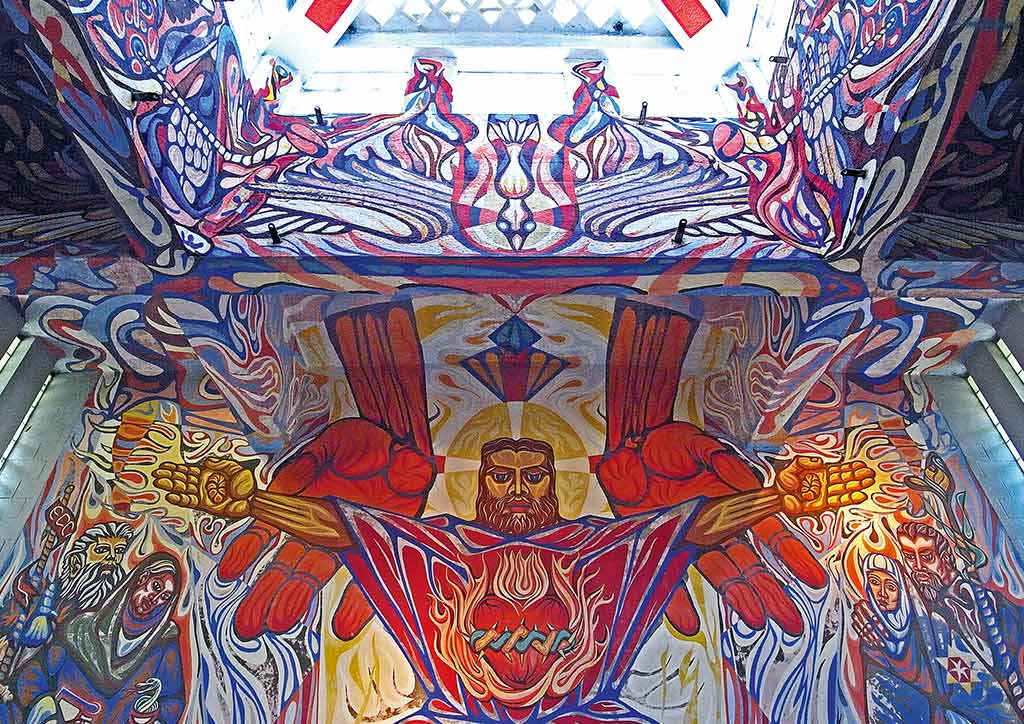
Benjamin Valenciano sculpted the figures of Mary and Joseph at the entry vestibule. He also created the crucifix and the Stations of the Cross. All four artists broke tradition in ecclesiastical art by depicting all their subjects as Filipinos, which caused an uproar in conservative ranks in the 1950s. This, along with the relative isolation of the chapel, apparently led to its non-inclusion as a primary subject of study in Philippine schools of design.
YOU MIGHT LIKE: Miagao Church’s naked coralline limestone, a mistake for authenticity
The Church of the Angry Christ is a key example of mid-century modernism and art that should be required study for students and architects. As a structure that is over 50 years old, the chapel is covered by the Heritage Law and should be declared one of the country’s heritage buildings. Aside from the social and economic history that the chapel represents, it is also a good example of tropical design and disaster risk-management half a century before these became fashionable. We should all be very angry if this structure disappears and continues to be marginalized in Philippine architectural historiography. Taking the cue from the structure’s magnificent mural, the punishment for such neglect should indeed be fierce.![]()
This first appeared in BluPrint Volume 5 2012. Edits were made for BluPrint online.


